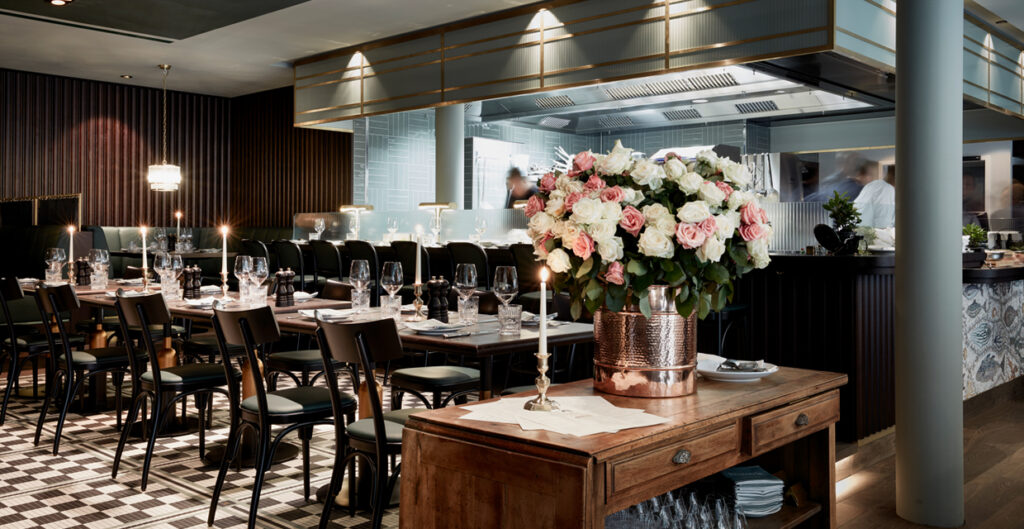Located on the streets of the city’s emerging Stadthöfe-Quartier, Tortue Hamburg is well placed for the city’s New Town, as well as access to numerous must-see areas, including the Rathaus, world-class shopping boulevards and the famed Jungfernstieg, with its passage into Hamburg’s Old Town.
In a constant state of flux, this ever-evolving quarter plays host to the building complex which houses Tortue – a block-wide structure that places the hotel alongside high-end retail and dining, with prime views of the district’s changing face.
It’s all contained in a six-story landmarked building that dates back to 1888 and once headquartered the Ministry for Urban Development, with an imposing redbrick façade that tells the story of its illustrious past.
Inside, a revamp of the original space led by David Chipperfield Architects and the Hamburg-based Stephen Williams Associates sees restored columns, soaring ceilings, and wrought-iron marquees sitting side-by-side with original frescos painted by Adrian Karbowsky in 1910, mosaic tiled flooring, and tall arched windows.
In its totality, Tortue is the work of three designers; no mean feat for a hotel of this size, which offers a unique fluidity between its network of spaces. Rooms, comprising 114 bedrooms, eight suites and four long stay apartments, are a heady mix of pattern and subtle hues, and warmly embrace guests despite their grand proportions.
The first commercial project of interior designer Kate Hume, the lofty accommodations are lined with bespoke wallpaper, exclusively produced by Amsterdam-based Little Owl Design, and smooth brass Areti pendant lamps alongside luxe bathrooms covered in marble-inspired tiles, and watercolor illustrations by local artist Anne Katrin Stroeh. French balconies in some guestrooms and an overall regal aesthetic round off an understated Gallic presence.
Additional designers enter the mix in the hotel’s many restaurant and bar outlets. Hong Kong-based designer Joyce Wang’s pan-Asian restaurant Jin Gui has a dark and seductive interior punctuated by loveseats upholstered in a graphic, tapestry-like fabric. A terrace and sunroom present memorable spots on which to dine on dishes made with seasonal and, where possible, biodynamic ingredients, while also offering views of the hotel’s courtyard.
Elsewhere, the French-German Brasserie is characterized by black metro tiles, shadowy booths, and marble counters-a stimulating space where a mosaic art piece by Emma Biggs takes center stage behind an open kitchen. Three drinking establishments, including the Stephen Williams-designed ‘bar noir’ and Hume’s lobby level ‘bar bleu’, cement Tortue’s arrival as a prime social hub, capped by a rooftop bar, which opens later this year complete with views of Herzog and de Meuron’s unmissable Elbphilharmonie in the distance.



